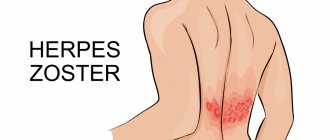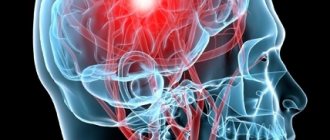Such ignorance gives rise to a huge number of misconceptions. People suffering from schizophrenia are considered dangerous to society, they are attributed with multiple personalities and a tendency to violence. But in fact, not all schizophrenics are such, and mild forms of the disorder may not be noticed by others at all.
What is schizophrenia
This is the name for a mental disorder in which there is a disturbance in thinking, self-perception, emotions and behavior. Schizophrenics do not suffer from split personality, it is a different mental disorder. This disease, first of all, makes a person stingy with emotions; he gradually withdraws into himself and stops reacting to the people around him. Main symptoms:
- Hallucinations. A person begins to see, hear and feel what is not really there.
- Rave. False beliefs and suspicions arise in the head of a schizophrenic. He claims that someone is following him, trying to harm him in some way, etc. The presence of irrefutable facts does not convince him otherwise. Sometimes a strong belief may develop that someone is stealing thoughts from your head or, conversely, putting in someone else’s.
- Behavioral disorders. A person suffering from schizophrenia may walk aimlessly from side to side, mutter something, freeze in one position for a long time, or suddenly start laughing. The appearance becomes sloppy as the schizophrenic stops taking care of himself.
- Speech organization disorders. Statements can be incoherent and are often pronounced out of place.
- Emotional disturbances. Schizophrenia is often accompanied by apathy. Facial expressions and gestures have no connection with the emotions expressed.
Manifestations indicating excessive mental activity are called psychoproductive or positive. These are thought disorders, hallucinations and delusions. The absence of normal emotional reactions, apathy, and inability to have fun are classified as the second group of symptoms - psychodeficient or negative.
To make a diagnosis, it is necessary to observe the patient for a long time. Manifestations of the disorder must be persistent and present for at least 6 months.
Types and types of symptoms of schizophrenia
- continuous-progradient - the disease flows continuously with a gradually increasing personality defect;
- paroxysmal-progradient - an exacerbation of the disease replaces a period of clinical remission, the destruction of personality increases with the progression of the disease;
- recurrent - attacks of schizophrenia are replaced by states of stable rest, personality changes are insignificantly expressed; A favorable type of disease course in which a person maintains working capacity and social interests for a long time.
Productive and negative symptoms of schizophrenia
Productive symptoms in schizophrenia include delusions, false perceptions, and strange behavior. Delusional thoughts are most often associated with feelings of special destiny, persecution, jealousy, or fantastic cosmogonies. Pseudohallucinations are usually of a verbal nature, commenting on or criticizing the patient’s actions. Other deceptions of perception can be in the form of oneiric visual hallucinations (cosmic dreams), changes in taste, crawling of non-existent insects or worms and a distorted perception of one's body.
Negative symptoms are expressed as apato-abulic syndrome, i.e. a decrease in the emotional-volitional manifestation of a person. Sooner or later, this leads to a personality defect in schizophrenia - such changes in the patient’s psyche that make it impossible for a person to fulfill his family and social functions. Patients with schizophrenia with a severe personality defect are incapable of productive activity. They give up studying, cannot hold down a job, stop caring about their loved ones and taking care of their appearance.
Depressive symptoms of schizophrenia
- seasonality of occurrence - deterioration of the condition in the off-season: spring and autumn;
- mood swings occur without external causes - there are no visible traumatic situations;
- changes in mood during the day - in the morning the background mood is much worse than in the evening;
- overvalued ideas or delusions of attitude;
- pronounced vital coloring of statements - a strong feeling of melancholy, pronounced depression, pessimism and despondency;
- psychomotor retardation - the patient does not ask for anything, does not strive for anything, sits for a long time in a drooping position.
Depression and mania in patients with schizophrenia are quite common and they have their own characteristics. Affective disorders in schizophrenia occur in a quarter of cases of the disease.
Mania in schizophrenia manifests itself through foolish behavior, elements of anger and frenzy. Unlike affective disorders, a manic state in schizophrenia develops suddenly and disappears just as quickly. Depressive symptoms of schizophrenia have endogenous features. Schizophrenic depression is usually accompanied by excessive anxiety and internal tension, without mental or physical justification. Anxiety-depressive syndrome in schizophrenia, in the absence of help from a psychiatrist, can lead to suicide. Relapse of depression often leads to new psychosis, so depressive symptoms in schizophrenia are grounds for hospitalization of the patient. Mood disturbances in schizophrenia are always combined with the main symptoms of schizophrenia.
Reasons for development
Schizophrenia, like other mental disorders, occurs due to dysfunction of the central nervous system. A malfunction occurs in certain brain structures, which leads to disruption of neural connections. They are not destroyed at all, just the commands given to the central nervous system become “incorrect”.
To date, there is no reliable information about why exactly schizophrenia develops. Most researchers believe that this disorder is hereditary. That is, the presence of people with schizophrenia in a family several times increases the likelihood of developing the disease in other family members. But so far no one has been able to identify a single “schizophrenia gene.” Most likely, there is some gene combination that makes a person vulnerable to this disorder, but does not necessarily cause it. A combination of various factors plays a major role: a person’s environment, genetics, individual characteristics of the body, etc.
Sometimes you can come across statements that a person has gone crazy from severe stress. But psychological trauma does not lead to schizophrenia; it can only give impetus to the development of the disease, if a person has such a predisposition.
The first signs of schizophrenia can be detected at different ages, but in a larger number of patients this disorder began to develop between the ages of 16 and 25 years. This period accounts for the greatest psycho-emotional load associated with adolescence in adolescence, first love, puberty and hormonal changes. All this also provokes the development of mental illnesses, to which a person has a predisposition.
Scientists also have not found a relationship between the likelihood of developing schizophrenia and belonging to a particular race, nationality, gender, etc.
The prevalence of this disorder is approximately the same throughout the world, affecting approximately 1% of the world's population.
Differential diagnosis of schizophrenia
Despite the striking symptoms of the disease, making a diagnosis is not easy. Firstly, not all components can be observed simultaneously. Secondly, with partially preserved criticism of the patient, or with the experience of past hospitalizations, such patients try to hide their experiences from prying eyes. When trying to encourage people to resume taking their medications, mentioning a doctor, or being admitted to a psychiatric hospital, they become aggressive and threaten to kill family members.
Therefore, doctors should have enough time to understand the causes of psychotic disorders.
Since individual symptoms can be observed in a number of other diseases, both mental and physical. This is achieved through patient monitoring by a group of psychiatrists, mandatory examination by a neurologist and therapist, and pathopsychological testing. If necessary, clinical tests and instrumental studies are prescribed.
Schizophrenia, differential diagnosis is carried out with bipolar affective disorder, organic brain damage, alcoholism and drug addiction, poisoning and severe somatic diseases.
Laziness, apathy, unwillingness to get out of bed, indifference to one’s needs and emotional impoverishment of people suffering from schizophrenia for a long time lead them to despair in the fight against their illness. It is necessary to carefully select the medicine and its dosage to alleviate this condition.
Often it is apatho-abulic syndrome and the development of a personality defect that leads such patients to permanent disability and the inability not only to earn a living, but also to take care of themselves in everyday life.
Neurotransmitters and schizophrenia
Neurotransmitters are biologically active substances that transmit impulses between neurons in the brain. Mediators are chemical complexes responsible for transmitting information from a nerve cell to the cells of all organs and tissues of the body.
Properties of the main neurotransmitters:
- acetylcholine - triggers the parasympathetic nervous system: slows down breathing and heartbeat, reduces blood pressure, activates the intestines, bladder and uterus, enhances the secretion of glands, constricts the pupil, controls muscles, affects memory, participates in the processes of intuition and imagination;
- GABA (gama-aminobutyric acid) – leads to inhibition of the central nervous system, improves blood circulation and brain metabolism, is involved in the processes of memorization and learning, and reduces muscle tone;
- adrenaline – has a stimulating effect, is responsible for the state of stress, fear, anxiety and other feelings of danger; constricts the blood vessels of internal organs, increases or decreases blood pressure, increases breathing and heart rate, and participates in metabolism;
- norepinephrine - maintains wakefulness, has the same properties as adrenaline, but unlike it, does not reduce blood pressure;
- dopamine – is a mediator of positive reinforcement in the brain, controls the mechanisms of motivation, satisfaction, attention and learning;
- serotonin – participates in sleep-wake and mood biorhythms, maintains the tone of the smooth muscles of internal organs, has a vasoconstrictor effect, maintains normal body temperature, regulates breathing and blood pressure, and is a component of allergic reactions;
The study of the structure of the brain of patients with schizophrenia has led to the description of some differences in the structure of the central nervous system. For example, an increase in the ventricles of the brain in patients with severe apatho-abulic syndrome (decreased will and impoverished emotions) or a decrease in the gray matter of the cerebral cortex.
Since these indicators are non-specific and are found in a large number of other mental and neurological diseases, it is very doubtful to take these indicators as a criterion for the disease.
Diagnostics
Schizophrenia has a wide variety of forms, so very often experts use the name of this disorder in the plural. The main symptoms, such as delusions and hallucinations, can also occur in other pathological conditions. Therefore, during diagnosis, it is very important to differentiate schizophrenia from other disorders.
To make a diagnosis, a psychiatrist uses the following methods:
1. Clinical and anamnestic examination . This examination is carried out at the first appointment. The doctor listens to the patient's complaints and examines him. Of great importance is not only the person’s condition at the moment, but also what happened to him before the onset of the disease.
Despite the fact that schizophrenia develops due to a disruption in the relationship between nerve cells, external factors (maternal pregnancy, trauma, conflicts, stress, infectious diseases, etc.) can negatively affect the course of the disease and interfere with recovery;
2. Pathopsychological examination . This diagnostic technique includes a series of tests relating to the emotional and volitional sphere of a person. The most famous is the ink blot test (Rorschach test), during which the patient is presented with 10 cards with color and black and white blots.
The Luscher test is also effective in diagnosing schizophrenia. It is based on the doctrine that a person’s perception of color depends on his psycho-emotional state.
These and other techniques allow you to assess the “unusuality” of a schizophrenic’s thinking. The fact is that the brain of a healthy and a sick person works differently. A person suffering from schizophrenia can see a whole story in a simple spot, whereas for an ordinary person it will remain a spot.
During psychological research, collections of questions are used. For example, a doctor might ask what a felt-tip pen and a boot have in common. A healthy person would be perplexed by such a question, but a schizophrenic would give the answer immediately. Such creativity in judgment is due to illness, not genius, although many brilliant people are often called crazy;
3. Neurotest and Neurophysiological test system (NTS) . In a laboratory setting, a capillary blood test (neurotest) can be performed, which helps confirm the diagnosis in doubtful cases. Thanks to it, certain markers of inflammation are detected in the blood, their number is directly proportional to the severity of the patient’s disease.
The neurophysiological test system is a modern diagnostic technique in psychiatry. During its implementation, a person’s reaction to external stimuli (light and sound) is assessed. With the help of NTS, you can accurately determine whether a person has schizophrenia or not. The use of EEG and MRI devices in these cases will be useless.
Only after a comprehensive diagnosis, a thorough examination and in full compliance with international criteria can a person be diagnosed with schizophrenia. In many cases, this requires a consultation with the participation of doctors of science and doctors of the highest category.
Symptoms of schizophrenia
The main symptoms of schizophrenia are apathy, lack of will, withdrawal, strange behavior associated with experienced hallucinations, delusional ideas. However, these symptoms can also accompany other mental conditions, which are important to correctly differentiate for successful treatment. Haste in determining the symptoms of a disease represents the main danger in diagnostic error and prescribing basic therapy.
Unfortunately, only experienced and highly qualified doctors can carry out a full diagnosis. This requires not only academic knowledge, but also extensive practical experience. Symptoms of schizophrenia are often confused with symptoms of organic brain diseases, toxic and infectious lesions of the nervous system.
Unfortunately, specialists at the Preobrazhenie Clinic often encounter diagnostic errors. Treatment is often carried out in the wrong direction, so the main symptoms of schizophrenia not only do not go away, but often begin to increase, and the person’s condition worsens.
Schizophrenia as a disease was discovered only two centuries ago. It was then that doctors began to describe the main symptoms of schizophrenia and select treatment methods.
And previously it was considered a vice, the possession of demons, and other supernatural explanations were also found.
The symptoms of schizophrenia, with a detailed picture of the disease, are noticeable even to an inexperienced person in medicine. Schizophrenia affects almost all areas of human mental activity.
Main symptoms of schizophrenia
- The speech contains reasoning, delusional statements and slipping from an important topic to others. Thinking is unconnected, florid and viscous.
- The will suffers greatly, and is painfully incapable of initiative, independent action and decision-making.
- Emotions are inadequate to the events taking place, facial expressions and pantomime are almost completely absent, the voice is monotonous and devoid of emotional nuances.
- A person loses social skills, communication is reduced to nothing, there is no desire to work, start a family and bring any benefit.
How is schizophrenia treated?
After making a diagnosis, doctors usually move on to treatment, the main goal of which is to completely eliminate the disease and its consequences. In the case of schizophrenia, doctors’ actions will be aimed at eliminating the symptoms, because they are not able to eliminate the “problems” in the patient’s brain.
Today, the medical prognosis is disappointing – schizophrenia is incurable. Doctors have some understanding of the development process of the disorder, but they do not know how to prevent it.
However, people suffering from schizophrenia are provided with qualified specialized medical care. Usually it is carried out in several directions:
- drug therapy. Traditionally, the treatment of schizophrenia uses antipsychotics that can eliminate hallucinations. During the period of exacerbation, drugs are administered by injection, and later the patient takes tablet forms. The same medications help prevent future exacerbations. Your doctor may also prescribe sedatives, tranquilizers, or antidepressants. This is necessary to eliminate anxiety, sleep disorders and other symptoms of schizophrenia.
- psychotherapy. The work of psychotherapists is aimed at working through the patient’s psychological and behavioral problems. During the conversations, the schizophrenic will learn to manage his symptoms, which will allow him to successfully adapt to society and return to normal life.
If you ask an experienced psychiatrist the question: “Is schizophrenia treatable?”, you will get a clear answer - no. But with timely and constant therapy, the patient’s condition can be improved so much that he can lead a normal life.
Schizophrenia attack symptoms
During an exacerbation of schizophrenia, the first thing that catches your eye is unreasonable anxiety. This may manifest itself as even stronger withdrawal or psychomotor agitation. The patient experiences severe mental stress, often hears voices of a threatening nature, becomes uncritical of his delusional thoughts and expresses them out loud.
During this period, a person stops sleeping at night, there is practically no appetite, anxiety and irritability increase. He also makes attempts to protect himself from danger by performing ridiculous actions or rituals, becomes distrustful of loved ones, and may begin to become an alcoholic or run away from home.
During psychosis, it is important to calm the person as much as possible, agree with his ideas and call a psychiatric ambulance team or a private psychiatrist.
Aggression as symptoms of schizophrenia
Relapse of schizophrenia may be accompanied by aggressive behavior. The patient is excited, rushes around the apartment, the mood changes sharply from supportive goodwill to violence and frenzy, and back. There is no criticism of one’s condition. Patients cease to realize where they are, get confused in time, and do not understand what is happening around them.
During attacks of aggression, patients can harm both themselves and others. You need to contact a psychiatrist as soon as possible to provide emergency psychiatric care.
Diagnostic symptoms of schizophrenia
The diagnosis of schizophrenia can only be made after long-term observation by doctors in a psychiatric hospital. A group of psychiatrists and other specialists collect the necessary life history, ask the patient and his immediate family about the onset and course of the disease, and conduct all the necessary examinations.
Highly qualified specialists pay attention to the patient’s behavior, facial expressions, voice and movements. Determine mental changes in the patient’s thinking, speech, attention and intelligence. When analyzing the data obtained, psychiatrists compare it with other possible diagnoses and, if necessary, prescribe additional examination by doctors of related specialties. Once the diagnosis of schizophrenia is determined and all the symptoms are described, the patient is given a complete treatment regimen for the disease.
Rehabilitation and social assistance
Treatment in a hospital setting can eliminate acute manifestations of the disease. With stable remission, the patient can continue to stay at home and receive the necessary care on an outpatient basis. For adaptation to be successful, you must:
- teach the patient how to properly respond to stressful situations and methods of preventing relapses;
- restore an adequate perception of the surrounding reality;
- tell the patient, his family members and close people about the disease, the features of its occurrence and course;
- normalize the functioning of memory and thinking, make it adequate;
- prepare the patient for the need to study and work.
Remission in schizophrenia can be indefinitely long, provided that the patient continues the course of maintenance drug therapy and psychotherapy. The support of loved ones, their care, love and attention is of great importance.
What happens if the disease is not treated?
Schizophrenia is a fairly severe form of mental disorder. In the absence of treatment from a psychiatrist, for example, in case of refusal to take medications, the patient’s condition will rapidly deteriorate. A lot depends on the severity of schizophrenia. The most common consequences of refusing therapy are:
- change in the patient’s personality, refusal to communicate with others;
- refusal to perceive reality;
- the occurrence of obsessive thoughts and ideas;
- complete isolation from others;
- the occurrence of dementia against the background of schizophrenia.
In the absence of drug treatment and consultation with a psychiatrist, patients with schizophrenia begin to hear various voices and see hallucinations. However, many patients with schizophrenia attempt to commit suicide. According to statistics, 50% of patients with schizophrenia sooner or later attempt to commit suicide. About 10% of such attempts end in death. A very dangerous condition is psychomotor agitation, which can occur suddenly in the absence of medication. In this case, the patient becomes dangerous not only to himself, but also to others.
It is also worth noting that among schizophrenics there are a lot of people with alcohol and drug addictions, which further aggravates the course of the disease.
Important! The social danger of schizophrenics is much exaggerated. During the period of remission, people with this diagnosis are no different from the society around them. Risks arise only during exacerbations, but they can be prevented without refusing full treatment and the help of a psychiatrist.
Myths about schizophrenia
Many myths have been created around schizophrenia, since this mental disorder scares people no less than AIDS or cancer. The most common misconceptions are the following:
1. All people suffering from schizophrenia are violent and dangerous, they belong in a special hospital. This myth is due to the fear of the unpredictability of mentally ill people in general and schizophrenics in particular. Cases of violence by the mentally ill receive too much publicity in the press, resulting in the impression that all “psychics” are dangerous.
In fact, people with schizophrenia are more likely to harm themselves than others. According to statistics, a much larger number of crimes are committed by persons under the influence of alcohol, but people who abuse alcohol are not isolated from society. Schizophrenics can lead completely normal lives if they follow the recommendations of their doctor.
2. The diagnosis of schizophrenia implies dementia and complete disability. It can be very difficult for people with various mental disorders to organize their own lives, but with the support of loved ones they can cope with the destructive influence of the disease. As for intellectual abilities, they are no higher or lower than those of healthy people.
Schizophrenia affects the way of thinking, not intellectual development. For example, John Forbes Nash Jr., who suffered from schizophrenia, learned to ignore his disorder. He became famous for receiving the Nobel Prize in Economics (1994). The film “A Beautiful Mind” was made about the life of this American mathematician.
3. Parents are to blame for the development of the disease. Modern research confirms that schizophrenia may be caused by heredity. However, genetic factors are not fundamental and the only ones that can influence the course of the disorder.
Its relationship with incorrect communication models in the family, pedagogical neglect and improper upbringing has not been established. Although an unfavorable environment can have a negative impact on the healing process, it cannot be considered the main cause of the development of schizophrenia.
4. Creative and brilliant people suffer from schizophrenia. Indeed, history contains many examples of great artists, poets and musicians suffering from various mental disorders. The artist Vincent Van Gogh and the writer N.V. Gogol were schizophrenics; it is attributed to Isaac Newton, Albert Einstein and other famous people. But the talents of these people have nothing to do with mental illness.
People with schizophrenia can demonstrate the same talents, strengths and weaknesses as a healthy person.
Another myth about schizophrenia is the persistent belief that this disorder does not need to be treated. It has already been mentioned several times above that schizophrenia cannot be treated. The point is that pathological changes in the human brain are irreversible. But modern medicine is able to help a sick person cope with the negative manifestations of schizophrenia, which can greatly complicate life for both himself and his loved ones.
Symptoms
In most cases, the disease manifests itself through hallucinations, frequent and long-lasting, observed for several years (the patient hears voices that no one else hears; he responds to these voices, giving the impression that he is talking to himself), speech becomes confused and unrelated thought, the subject or topic of conversation changes sharply, concentration of attention decreases. Unreasonable fears, obsessions, including those of a suicidal nature, paranoia and delusions often appear. There is a high probability of developing a depressive state and apathy (the patient may not say or move anything for a long time or acquire unnatural, mannered facial expressions, gestures and gait), loss of vital stimulus, lack of desires and needs. But with an increased stress level, the patient enters a state of strong emotional arousal. Schizophrenia is also characterized by pathological states of anxiety and obsessive-compulsive disorders.
Among the concomitant somatic diseases in schizophrenia, diabetes and osteoporosis, decreased levels of sex hormones and metabolic disorders in the blood and, as a consequence, atherosclerosis and pancreatitis are common; respiratory tract diseases and infectious diseases, heart disease. Increased risk of alcohol and drug addiction. The listed factors accompanying the disease lead to complete social disadaptation and a low level of human life expectancy.
.
Long-term studies reveal the following statistics of the disease: on average 5 people per thousand. In general, there is no gender predisposition, but men tend to have the onset of the disease at an earlier age than women.
Only advances in neurobiology have made it possible to study the causes of schizophrenia and the mechanics of the development of the disease in general. Genetic predisposition, neurobiological disorders, living conditions (both in childhood and in adulthood), urban factors (living in urban environments, migration and discrimination), interaction of biological (as the basis of the dopamine hypothesis), psychological and social parameters, exposure to adverse events , so-called stressors (life losses, loss of loved ones, sexual or other violence, difficult relationships in the family and in society) and their influence - the combination of these criteria and each of them separately are considered and studied as potential causes of the development of schizophrenia.
With early diagnosis, such nonspecific traits are observed as irritation over unimportant reasons, a desire for isolation from society, reluctance to form close and/or friendly relationships, lack of attachments and preferences, and detachment.
To diagnose schizophrenia, it is necessary to take into account the fact that the symptoms (their totality, and not a separate sign) must be observed for at least six months.
To make a diagnosis according to the ICD-10 criteria used in the Russian Federation, observation of at least:
- one of the possible symptoms: confidence in the accessibility of one’s own thoughts to others; delusional sensation of the body, limbs, thoughts, actions; voice hallucinations, including listening to body parts; crazy ideas fixed.
- two of the following symptoms: persistent hallucinations, both visual and auditory, together with delusions, lasting at least a month; sudden blocking of the thought process, a “spell” of thought, leading to abrupt speech; complete refusal to speak; actions and actions that contradict all accepted behavioral standards; movement disorders (excited gesticulation, “freezing”, unnatural plasticity of the body); lack of any external interests, fixation on one’s own experiences.
Diagnosis according to the DSM criteria adopted in the USA and some other English-speaking countries is characterized by the presence of the same spectrum of symptoms as for the ICD: delirium (paranoid and fantastic), hallucinations, obsessions, uncoordinated speech and others. Also: self-isolation, antisocial behavior, lack of social contacts. Emotionally, this manifests itself in avoidance of visual contact and lack of expression of emotions. In the behavioral sphere, there is a deterioration in self-care skills. The duration of all the above symptoms must be at least six months, and during this time period, symptoms such as delusions, obsessions, hallucinations, psychopathological speech disorders, behavioral and emotional disorders must appear within a month.
Assistive treatments for schizophrenia
Today you can find a lot of advertisements about non-traditional methods of treating various mental disorders, including schizophrenia. Patients are offered remedies prepared from medicinal herbs by monks or developed in secret laboratories by super-scientists.
You can also buy a device on the Internet that will restore the affected areas of the brain. But all this is just another attempt by enterprising businessmen to make money on someone else’s misfortune. It is not possible to cure schizophrenia using these methods, although herbal medicines will have a general strengthening effect on the body.
If we talk about auxiliary methods of treating schizophrenia, the most effective may be:
- art therapy. Practicing various types of art has a beneficial effect on the psyche. When working with schizophrenics, music and drawing classes are most often used;
- family therapy. During group sessions, assistance is provided not only to the patient himself, but also to his family members. A healthy person often also needs psychotherapeutic help, because living next to a sick person is not at all easy;
- Alternative medicine. It is unlikely that you will be able to get rid of schizophrenia with the help of acupuncture, yoga, or breathing exercises. But with the right approach, you can forget about its manifestations;
- group therapy. Schizophrenia makes a person withdrawn and distrustful, which is why many psychotherapists practice so-called communication therapy. A special group is being created, which includes both schizophrenics and healthy people. First, patients communicate with others like themselves, and then try to build relationships with the rest of the meeting participants. Everyone benefits from such communication: schizophrenics acquire communication skills, and healthy people learn tolerance and tolerance when communicating with a mentally ill person.
If you use the above methods of treating schizophrenia together with psychotherapy and taking medications prescribed by your doctor, you can almost completely eliminate the symptoms of the disease.
Schizophrenia treatment by communication
As is known, this disease is characterized by paranoia, delusions, as well as emotional and affective disorders, which are observed in the patient in a certain sequence. Quite often, schizophrenia occurs at a young age, but it is also possible for it to appear in children and the elderly. If schizophrenia is diagnosed, communication treatment is carried out in combination with psychotherapeutic procedures and the use of medications. As we said earlier, one of the reasons for the appearance of schizophrenia may be prolonged solitude and unfavorable communication in the family area. Thus, communication treatment is a very important aspect in correcting the symptoms of this disease, widely used by specialists at the Rehab Family clinic.










